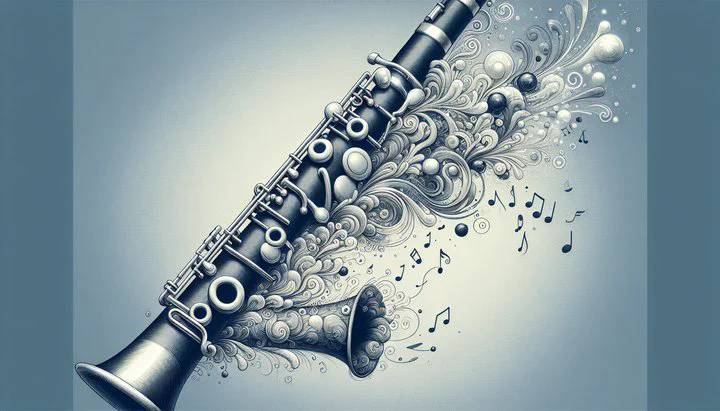Troubleshooting New Clarinet Air Flow

Troubleshooting New Clarinet Air Flow
Getting a new clarinet is exciting, but it can also bring some surprises, especially with air flow. Troubleshooting new clarinet air flow is a common hurdle for musicians transitioning to a fresh instrument. You may notice your sound isn’t as full or clear. This happens because new clarinets often need different techniques, especially with air pressure.
When you play a clarinet, air flow is crucial in producing sound. A new clarinet might feel different because it can have tighter joints and fresh pads, leading to increased resistance. This means that more air pressure is required to counter this resistance and create a strong, vibrant tone. If your air flow isn’t quite right, it can affect the quality of your music, making it sound weak or airy.
Understanding the role of air pressure can help clarify why these issues occur. Air pressure and resistance work together to produce sound in your clarinet. When you begin blowing in a new clarinet over the first month, you might find that old habits don’t work as well. You’ll need to adjust how you breathe and support your air flow with your core muscles. This ensures that you can push enough air through the instrument to overcome resistance and produce clear sound.
Knowing these challenges exist is the first step to overcoming them. Recognizing that troubleshooting new clarinet air flow is a normal part of the process can help you stay patient and motivated. By focusing on how you use your breath and understanding the changes a new clarinet brings, you’ll be well on your way to mastering your new instrument.
Breath Control Techniques
Mastering breath control is crucial when playing a new clarinet. This helps you overcome the unique challenges of a fresh instrument. If you’ve ever watched brass players or singers, you might have noticed how they use their breath to create powerful sounds. Clarinetists can learn a lot from them. Using breath control for brass instruments and singing can help you improve your air flow and sound on your clarinet.
One key technique is engaging your core muscles to help with breath production. This means using the muscles in your abdomen to help push air out more efficiently. Try this exercise: stand up straight and take a deep breath, feeling your belly expand. Then, blow out slowly, using your abdominal muscles to control the air flow. Practicing this will give you more control over your breathing and help you produce a stronger sound on your clarinet.
Another helpful tip is to practice long tones. Long tones are when you play a single note for as long as you can, focusing on maintaining a steady sound. This exercise helps you learn to control your breath and keep a consistent air stream. It’s similar to how singers practice holding notes to strengthen their breath support.
Additionally, try the “hissing” exercise: take a deep breath and release it slowly through your teeth, making a hissing sound. This helps you focus on steady air flow and control.
Finally, don’t forget the importance of relaxation. Tension can restrict your air flow, making it harder to play. Make sure you’re not holding your breath or clenching your muscles while playing. Instead, keep your shoulders relaxed and focus on smooth, deep breaths. This will help you stay calm and in control, even when more air pressure is required to counter the resistance of a new clarinet.
By incorporating these breath control for brass instruments and singing techniques into your practice, you’ll find that troubleshooting new clarinet air flow becomes much easier. You’ll start noticing improvements in your sound, making playing your new clarinet a more rewarding experience.
Adjusting to a New Clarinet
Getting used to a new clarinet takes time and patience. In the first month, you may face challenges as you get used to how your new clarinet feels and sounds. When blowing in a new clarinet over the first month, it’s essential to approach the process step by step to ensure a smooth transition.
Start by setting aside regular practice sessions focused on troubleshooting new clarinet air flow. Begin with short practice sessions, gradually increasing their length as you become more comfortable. This helps your body adapt to the changes in air pressure and resistance that a new clarinet can bring. Remember, more air pressure is required to counter the initial resistance, so be patient with yourself as you adjust.
In your practice, pay close attention to your breathing techniques. Engage your core muscles to support your air stream effectively. This means taking deep breaths and using your abdominal muscles to control the airflow, much like you would when using breath control for brass instruments and singing. Practicing this will help maintain a consistent sound and prevent fatigue.
It’s also important to monitor your progress. Record yourself playing at the start of each week and compare the recordings over time. Listen for improvements in tone and consistency. This will help you hear improvements and identify areas that need more focus. You might notice that as you become more familiar with the instrument, your air flow and sound quality will improve. Adjust your playing techniques as needed, and don’t hesitate to seek advice from fellow clarinetists or educators who have gone through similar experiences.
Finally, remember that each clarinet is unique, and it may take a few weeks to fully acclimate. Stay positive and keep experimenting with different techniques until you find what works best for you. By being patient and persistent, you’ll soon find yourself at ease with your new clarinet, ready to produce beautiful music with confidence.
Consider visiting our community subreddits for peer support and advice. Share your experiences or questions in the comments section, and let’s learn together!